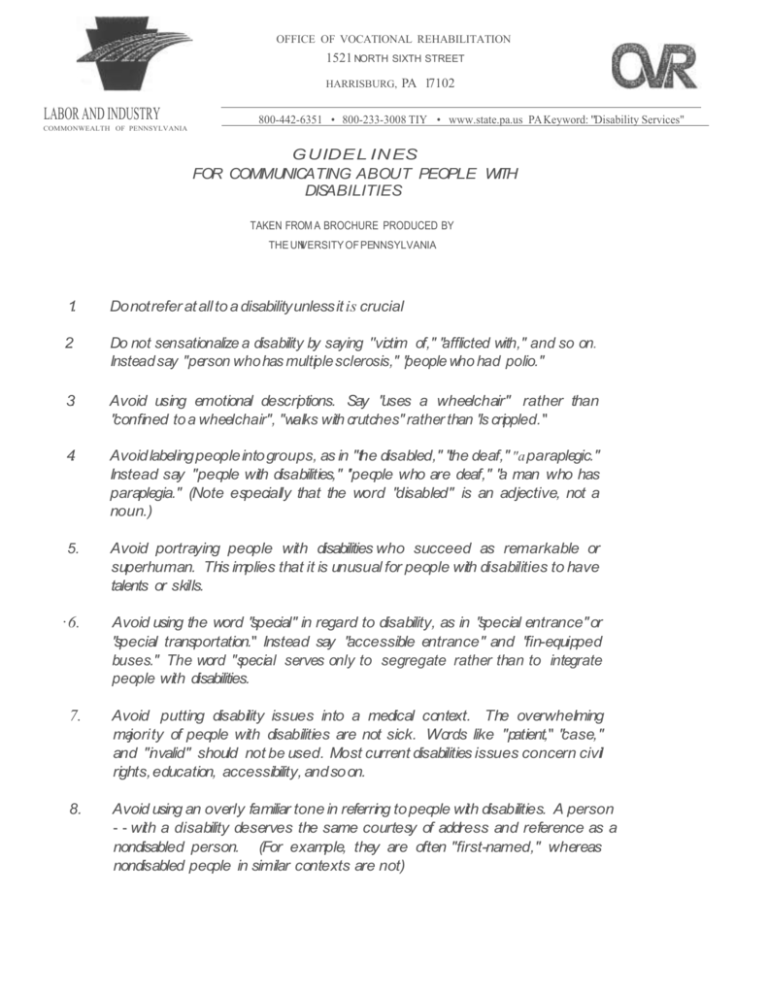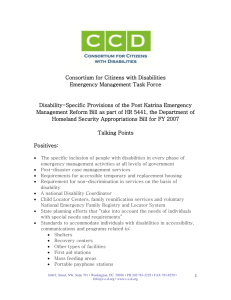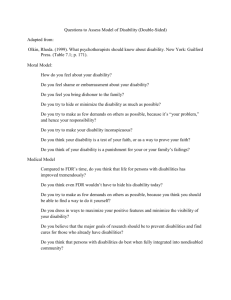One Pager Guidelines for Communicating About People with
advertisement

OFFICE OF VOCATIONAL REHABILITATION 1521 NORTH SIXTH STREET HARRISBURG, LABOR AND INDUSTRY COMMONWEALTH OF PENNSYLVANIA PA 17102 800-442-6351 • 800-233-3008 TIY • www.state.pa.us PA Keyword: "Disability Services" G UIDE L I N ES FOR COMMUNICATING ABOUT PEOPLE WITH DISABILITIES TAKEN FROM A BROCHURE PRODUCED BY THE UNIVERSITY OF PENNSYLVANIA 1. Do not refer at all to a disability unless it is crucial 2. Do not sensationalize a disability by saying ''victim of," "afflicted with," and so on. Instead say "person who has multiple sclerosis," "people who had polio." 3. Avoid using emotional descriptions. Say "uses a wheelchair" rather than "confined to a wheelchair", "walks with crutches" rather than "is crippled. " 4. Avoid labeling people into groups, as in "the disabled," "the deaf," "a paraplegic." Instead say "people with disabilities," ' people who are deaf," "a man who has paraplegia." (Note especially that the word "disabled" is an adjective, not a noun.) 5. Avoid portraying people with disabilities who succeed as remarkable or superhuman. This implies that it is unusual for people with disabilities to have talents or skills. ·6. Avoid using the word "special" in regard to disability, as in "special entrance" or "special transportation." Instead say "accessible entrance" and "fin-equipped buses." The word "special serves only to segregate rather than to integrate people with disabilities. 7. Avoid putting disability issues into a medical context. The overwhelming majority of people with disabilities are not sick. Words like "patient," "case," and "invalid" should not be used. Most current disabilities issues concern civil rights, education, accessibility, and so on. 8. Avoid using an overly familiar tone in referring to people with disabilities. A person - - with a disability deserves the same courtesy of address and reference as a nondisabled person. (For example, they are often "first-named," whereas nondisabled people in similar contexts are not)











